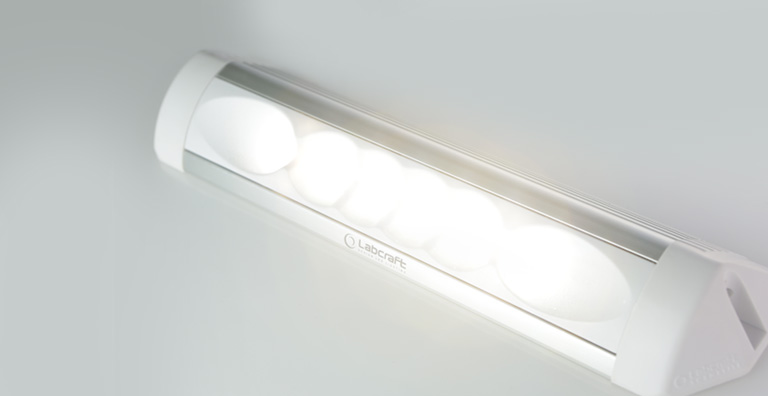Technical
What is a lumen?
The lumen (lm) is the SI unit for measuring the total amount of visible light emitted from a source.
What is lux?
Lux is the SI unit for illuminance – intensity of light on a surface.
What does colour temperature mean?
Colour temperature of light is quoted in degrees Kelvin. The colour temperature of light correlates to the colour of light emitted from a black-body radiator when heated to a specific temperature. This could be thought of as coal on a fire; it can be seen glowing red hot and white hot. Red hues are towards the lower/cooler end and blue hues are towards the higher/hotter colour temperatures – therefore white hot coals are a higher colour temperature than red hot coals. The colour temperature of a typical domestic incandescent light bulb is 2,700 Kelvin – an orange/red hue of white. The colour temperature of daylight is around 6,000K. White LEDs can generally be sourced from 2,200K to 10,000K.
What does CRI mean?
CRI (Colour Rendition Index) is a measure of the ability of a light source to reveal the colours of various objects faithfully in comparison with an ideal or natural light source such as the sun/natural daylight. The highest possible CRI is 100. Incandescent light bulbs have CRIs of 100, fluorescent tubes range from 50 to 90 if using tri-phosphor tubes and LEDs generally range from 70 to 90CRI.
What is efficacy?
Efficacy is a measure of the ratio of visible light to the power consumed and is measured in lumens per Watt (lm/W).
Are all LEDs the same?
No – LEDs are primarily two different layers of material that conduct electricity in one direction and in doing so release photons (light). These layers vary depending on LED colour and manufacturer. These layers are assembled differently; assembled in different packages and on different bases such as plastic and ceramic, depending on the manufacturer, patents, power etc. They can include primary optics built into the package. All non RGB LEDs on the market are actually royal blue LEDs with an added phosphor to convert to a shade of white. Phosphor qualities vary significantly; the worst resulting in an inability to maintain colour over time, achieve colour repetition, and maintain light output. Most importantly, they all have varying properties when it comes to dissipating the heat generated internally; this is the main contributor to the life of the device.
What voltage are LEDs?
LEDs are all very low voltage typically ranging from 2V to 4V depending colour and specific device.
What is the expected life of an LED?
Life can vary enormously depending on the quality of the device and its environmental conditions – primarily temperature and pollutants. The very long life expectancy of LEDs means that it is often not feasible to carry out real life testing in terms of time, therefore manufacturers will tend to perform relatively short term tests and then extrapolate the data to provide L70 or L80 figures. These figures are the expected light degradation curves to 70% or 80% of the initial light output over time. These curves are based on specific drive currents and temperatures and not all tests are carried out under the same conditions.
Do LEDs get hot?
Yes – this is also the primary factor in maximising the life of an LED. All LEDs create heat; the more powerful the device, the more heat it will create. It is imperative that the heat can leave the device and be dissipated accordingly. The core temperature of an LED in many cases could be circa 100°C.
How efficient are LEDs?
The cool white LEDs that Labcraft use are around 35% efficient in ‘real life’ operating conditions. These LEDs are one of the most efficient available. A typical automotive filament light bulb is around 2% efficient meaning 98% of the electrical power used is turned into heat. The efficacy of the same Labcraft LED would be 140 lumens per Watt compared to 10 lumens per Watt with automotive bulb.
About Labcraft
Labcraft are industry leaders in the field of LED Commercial Vehicle lighting for trailers, trucks and vans, and for the Emergency Vehicle sector. Labcraft design and manufacture in the UK a range of high-quality LED lighting products with distinctive design features. Labcraft lighting solutions have proven to improve safety and reduce vehicle lifetime costs.








